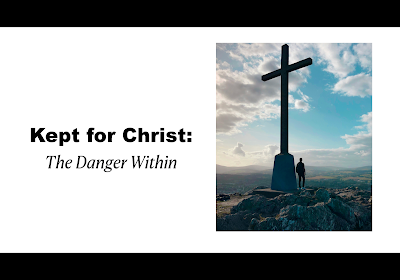Part of the Clarity Series: Building a Christian Worldview
In this Clarity series, we’re building a Christian worldview to help us navigate life’s toughest topics. So far, we’ve explored spiritual warfare, the Bible’s trustworthiness, the relationship between science and faith, political identity, the End Times, and biblical morality.
Today, we turn to a topic that shapes relationships, culture, and the church: How should we think about gender?
The Big Idea:
God’s desire is for men and women to work together in unity for His Kingdom, reflecting His image in partnership.
The Lens of Our Worldview
Imagine a builder tasked with constructing a magnificent house. He’s given blueprints and tools but decides to ignore the plans and follow his own instincts. The result? A structure far from the original vision—distorted and incomplete.
That’s what happens when we ignore God’s Word, the blueprint for life. The Bible is a gift from God to help us know Him, understand His will, and build a worldview that reflects His character. Even when we disagree, a shared biblical foundation unifies us and anchors us in truth.
Gender might not seem like a “difficult” topic at first glance, but it deeply affects how we approach marriage, leadership, relationships, identity, and church life. If we want clarity, we must understand:
• God’s design for men and women,
• how sin distorted that design, and
• how the Gospel restores it.
God’s Design for Gender
To think clearly about gender, we begin in Genesis—with creation.
1. Created in God’s Image (Genesis 1:26–28)
Both men and women are made in the image of God, called to reflect His character and co-rule over creation. Masculinity and femininity are not opposites—they are complementary expressions of God’s nature. Together, they reveal God more fully than either could alone.
2. A Helper and a Partner (Genesis 2:18–25)
When God created Eve, He called her a “helper” fit for Adam. The Hebrew word for “helper” (ezer) is also used of God aiding His people—far from a lesser role, it signifies strength and necessity. The word translated “rib” can also mean “side,” suggesting a unity of two halves. Marriage, in this context, becomes a reunion—man and woman joined together for a common purpose.
3. The Fracture of Sin (Genesis 3:16)
Sin distorted God’s good design. Instead of partnership, domination entered the picture—men ruling over women, and women longing for the unity that was lost. Throughout Scripture, we see the effects of this distortion in stories like Hagar’s, Tamar’s, and countless others. Women are often portrayed not as rebellious, but as victims of broken systems.
Restoration Through the Gospel
The good news of the Gospel doesn’t just reconcile us to God—it begins restoring what sin shattered, including relationships between men and women.
1. Invitation to Discipleship (Luke 10:38–42)
Jesus welcomed women like Mary of Bethany as disciples—something radical in His cultural context. He didn’t relegate women to support roles. He invited them to learn, lead, and participate fully in the Kingdom mission (Luke 8:1–3).
2. Partners in the Mission (Romans 16)
Paul’s ministry depended on both men and women. Of the 28 people mentioned in Romans 16, 10 are women—including Phoebe, a deacon; Priscilla, a teacher; and Junia, possibly an apostle. These women weren’t footnotes—they were central to the Gospel’s expansion.
3. Unity in Christ (Galatians 3:28)
In Christ, “there is no male and female.” This doesn’t erase differences—it removes hierarchy and exclusion. The early church welcomed women into leadership, learning, and even martyrdom. As Rodney Stark points out in The Rise of Christianity, women often outnumbered men in the early church, holding influence in both public witness and house churches.
The Big Idea: Unity in God’s Kingdom
God created men and women to reflect His image together. Sin fractured this partnership, introducing dominance and marginalization. But through Jesus, God restores His design—inviting men and women to serve as equal partners in Kingdom work.
We must not overlook anyone’s contributions based on gender, race, or social status. In God’s Kingdom, every gift matters. Unity is not uniformity, but a Spirit-empowered harmony of purpose, dignity, and mutual service.
Your Challenge
Take time this week to examine your heart:
• Am I living as if men and women are equal partners in God’s Kingdom?
• Have I undervalued someone’s voice or gifts based on gender?
• Am I encouraging others to serve, lead, and reflect God’s image—regardless of role or background?
Let’s model God’s design by affirming one another, walking in unity, and using our gifts to reflect His character in the world.
Tying It to Our Worldview
The Clarity series helps us build a biblical lens for life:
• Spiritual warfare teaches us to stand firm in Christ.
• The Bible grounds us in truth.
• Science and faith are complementary tools for understanding God’s world.
• Politics remind us of our allegiance to King Jesus.
• The End Times call us to live faithfully.
• Morality shapes our witness.
Now, gender calls us to reflect God’s design through Spirit-empowered partnership.
Closing Prayer
• Thank You, God, for creating both men and women in Your image.
• Give us wisdom to honor Your design and partner in Your mission.
• Shape us, Holy Spirit, to reflect Your love and unity in the church and the world.






